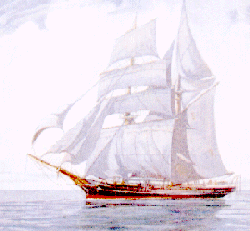| No one has ever solved the mystery of the Mary Celeste,
but quite a few people later came forward, claiming they were survivors
of the seas most famous mystery. Most of these claimants were either
attention-seekers or plain conmen out to get money. But curiously, two
Liverpool sailors were among those who said they'd been onboard the Mary
Celeste during her fateful voyage.
One was a 92-year-old cook from Maryland Street named Laurence Keating. Keating said he joined the crew at the last minute because one of the superstitious sailors on the Mary Celeste refused to go on a |
 |